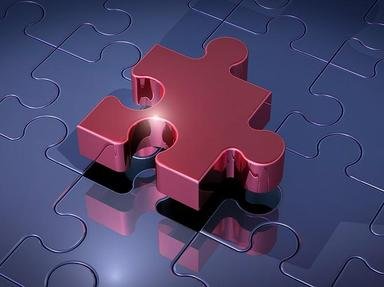Quiz Answer Key and Fun Facts
1. Alice and Bob are each given either a red or a green card, which only they can see. They are told that at least one of their cards is red. Alice says to Bob, "I don't know what color your card is". Bob replies, "one of us is holding a red card, and the other one is holding a green card". What color is Bob's card?
2. Out of "red" and "green", don't choose the answer that isn't the opposite of the color that is not green.
3. Alex is holding either a red or a green card. Exactly three of the following people are telling the truth.
Brooke: The card is red.
Caitlin: Exactly one of Brooke and Derek is telling the truth.
Derek: The card is green.
Ethan: Caitlin is lying.
Frankie: Ethan is lying.
Georgia: The card is red.
What color is Alex's card?
4. The alphabetical position of the middle letter in this word is the number of letters in the word. Which color am I talking about?
5. Most chessboards have light and dark-colored squares, but mine is a checkerboard of alternating red and green squares.
In chess, a bishop moves diagonally, and a knight moves in an L shape (of any orientation).
During a game, my bishop starts on a red square and makes a move. My opponent's knight starts on a green square and makes a move. What color square are both the bishop and knight on now?
6. I sit around a circle of seven people, and hold a double-sided counter with red on the face-up side and green on the obverse. I pass it around the circle, and as each person takes the counter they flip it to the opposite side. When it reaches me again, I pass it around the circle in the other direction, and we continue the pattern of flipping it during each pass.
When I hold the counter for the third time, what color is face-up?
7. A blue trapezium, green pentagon and red hexagon must be placed in a row from left to right according to the following rules:
1. The trapezium must not be to the left of the pentagon.
2. The pentagon must be to the left of the hexagon.
3. The hexagon must be to the left of the trapezium.
What color shape is on the left?
8. A card has writing on both sides. One side reads, in red ink, "the statement on the obverse is a lie". The obverse reads, in green ink, "the statement on the obverse is true if and only if it is written in ___".
To make this a paradox (where there is no consistent way to call some of the statements "true" and some of them "false"), what color fills in the blank?
9. Six people at a table play a game. They begin with a red and a green counter each. The first player puts a red counter into a collective pile, which is passed onto the next player.
Each subsequent player adds their red counter if and only if there was an odd number of green counters in the pile at the beginning of their turn, and adds their green counter if and only if there was an odd number of (total) counters in the pile at the beginning of their turn.
So, each player's turn could consist of adding both a red and a green counter, or one or the other, or neither, before passing the new pile onto the next player.
When the sixth player has completed their turn, what color are the majority of the counters?
10. This quiz has the same number of "red" answers as "green". What, then, is the answer to this question?
Source: Author
AdamM7
This quiz was reviewed by FunTrivia editor
spanishliz before going online.
Any errors found in FunTrivia content are routinely corrected through our feedback system.

